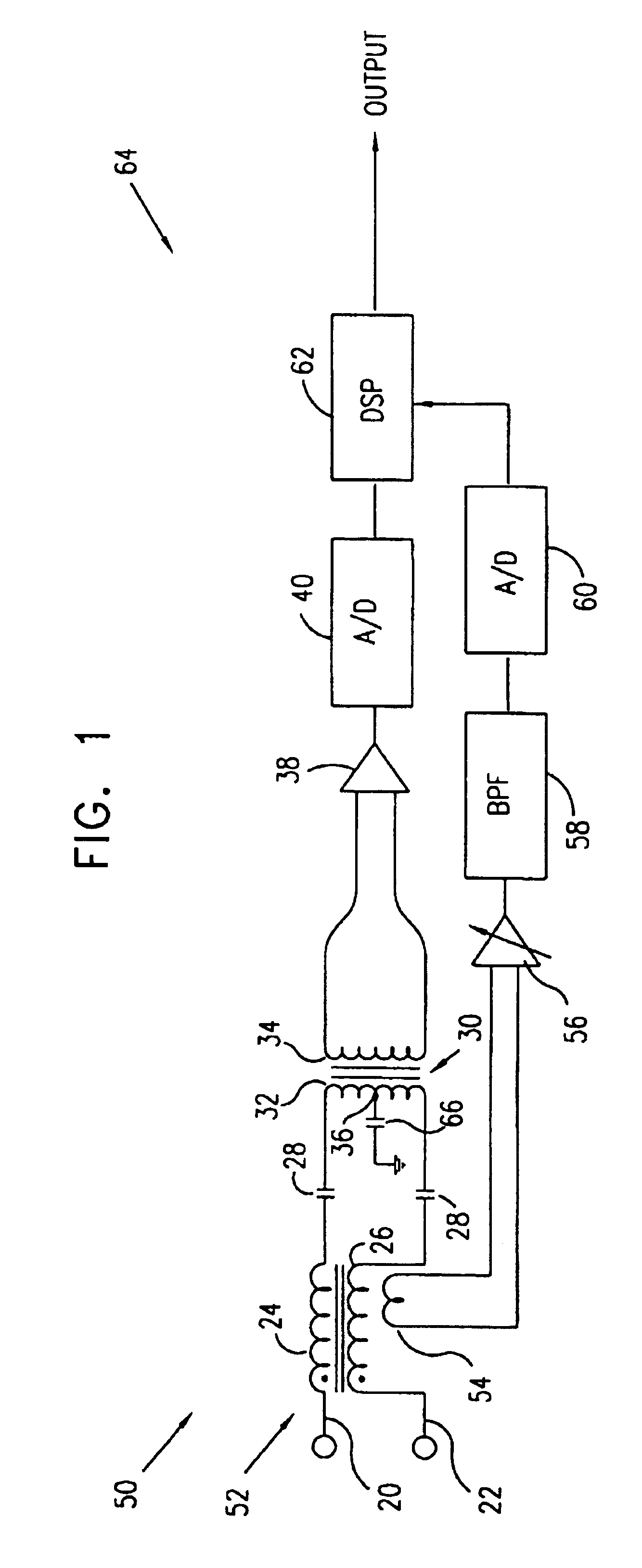Method and apparatus for RF common-mode noise rejection in a DSL receiver
a receiver and common-mode noise technology, applied in the field of high-speed data communications over telephone cables, can solve the problems of significant degradation of vdsl signals, overlap of vdsl (up to 20 mhz), and particularly prone to interference signals from twisted pairs
- Summary
- Abstract
- Description
- Claims
- Application Information
AI Technical Summary
Benefits of technology
Problems solved by technology
Method used
Image
Examples
Embodiment Construction
[0030]FIG. 1 is a schematic circuit diagram showing a receiver 50 for high-speed data signals, in accordance with a preferred embodiment of the present invention. Signals are input to the receiver from input lines 20 and 22 through a common-mode choke 52. Typically, the input lines are twisted pair telephone wires, and the receiver is part of a VDSL modem. Alternatively, receiver 50 may be coupled to input lines of other types and may be adapted to receive and process signals transmitted in accordance with other standards, as are known in the art. Choke 52 comprises parallel signal windings 24 and 26. The output of choke 52 is coupled via capacitors 28, serving as a high pass filter, to a primary winding 32 of a transformer 30. A secondary winding 34 of the transformer is coupled to processing circuitry 64, which processes the signals as described further hereinbelow. Preferably, primary winding 32 has a center tap 36, which is grounded through a capacitor 66, in order to ensure tha...
PUM
 Login to View More
Login to View More Abstract
Description
Claims
Application Information
 Login to View More
Login to View More - R&D
- Intellectual Property
- Life Sciences
- Materials
- Tech Scout
- Unparalleled Data Quality
- Higher Quality Content
- 60% Fewer Hallucinations
Browse by: Latest US Patents, China's latest patents, Technical Efficacy Thesaurus, Application Domain, Technology Topic, Popular Technical Reports.
© 2025 PatSnap. All rights reserved.Legal|Privacy policy|Modern Slavery Act Transparency Statement|Sitemap|About US| Contact US: help@patsnap.com



